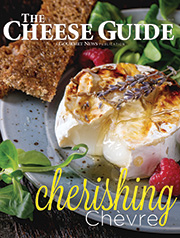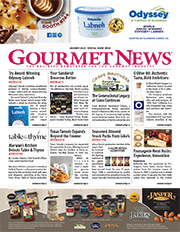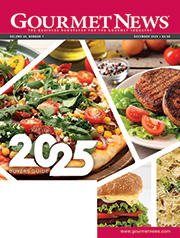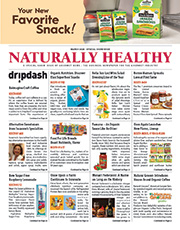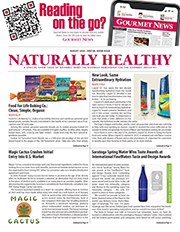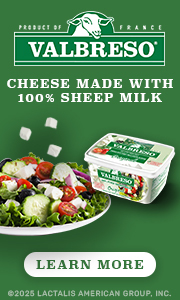American Farmers to Feel Some Economic Pain in 2016
By Lorrie Baumann
U.S. Secretary of Agriculture Tom Vilsack said February 25 that he’s optimistic about America’s farm economy. “It’s easy to look at things in a pessimistic view because of softening commodity prices and decreasing farm income, but I don’t share that pessimistic view,” he said.
Vilsack was speaking at the U.S. Department of Agriculture’s annual Agricultural Outlook Forum, which is intended as a discussion of novel and innovative ways to expand opportunity and provide support for America’s farming families. He noted that among his reasons for optimism is that the unemployment rate is falling in rural America, and rural America’s poverty rate is also falling. “We’ve lent a hand in making sure that rural America continues to thrive,” he said.
Vilsack’s sunny outlook is in dramatic contrast to the more dismal forecast offered by the department’s Economic Research Service, which is forecasting a $9.6 billion drop in cash receipts for the country’s farm sector. ‘The expected drop in 2016 cash receipts is led by declines in nearly all major animal/product categories (including dairy, meat animals, and poultry/eggs), as well as vegetables and melons,” according to the USDA’s farm income forecast for 2016. Those drops in farm income are driven by falling commodity prices that reflect higher production. While farmers have tightened their belts on expenses, commodity prices are falling faster, which means that farmers are likely to have to borrow more money to stay in business, according to USDA Agricultural Economist Ryan Kuhns. Farmers will also offset some of the decline in their revenues through federal subsidies, which are dependent on commodity prices. Direct government farm program payments are forecast to rise by 31.4 percent in 2016 to $13.9 billion, according to the USDA.
Strong export sales of American agricultural commodities over the past seven years as well as increased numbers of acres enrolled in conservation programs are bright spots for American agriculture, Vilsack said. He added that the USDA has invested to provide additional jobs in rural America so that more jobs will be available to farmers who need off-farm income to keep their family farms afloat. “Because of the investments and hard work of folks in rural America, I’m optimistic about the welfare of farm communities,” he said. “I’m extraordinarily optimistic about he future because I see the potential for expanded exports.”
He noted that the Trans-Pacific Partnership agreement, which would reduce or eliminate tariffs on American exports to member countries – which can be as high as 700 percent for American agricultural products – would provide extra opportunities in countries with which the U.S. does almost half of its trade and which have expanding middle classes. “They are expanding middle classes and they are interested in our agricultural products – our quality is the best, and our safety is the best,” Vilsack said. “Our expanding efficiency will keep us competitive on the world market.” Through expanded trade with countries like Japan and China, TPP can increase annual net farm income by $4.4 billion, compared to not approving the pact, according to the American Farm Bureau Federation.
American farmers are growing more efficient and more productive, and 95 percent of the world’s consumers of products, services and goods living outside the U.S., said Vilsack, who noted that there’s an opportunity cost to delays in approving TPP because American food producers are missing out on those new markets in the meantime. Vilsack noted that the Cuban market presents an opportunity for American food exporters. “We should be dominating the Cuban market. There’s tremendous demand in Cuba, which imports about 80 percent of what they need to feed their people. We have the logistics capability to dominate that market.” He added that before that can happen, the U.S. will need to lift its current embargo against Cuba. That embargo currently forbids the USDA to use any of its programs for Cuban trade.
Merchandising Your Store’s Brand the Beekman 1802 Way
By Lorrie Baumann
Merchandising your store’s brand as well as your products can go a long way towards making your store a destination, according to Beekman 1802 Founders Dr. Brent Ridge and Josh Kilmer-Purcell. The duo operates a retail store in their hometown of Sharon Springs, New York, as well as an online store, seasonal popup stores and the farm that supplies nearly everything they eat as well as ingredients for some of the products in their Beekman 1802 line of food, personal care and home décor products. The Beekman 1802 line has been called the fastest-growing lifestyle brand in the country, with food products in Williams-Sonoma and Anthropologie and home décor products in stores around the country. “A lot of lifestyle brands say they’re storytellers. Our brand is actually our life,” Kilmer-Purcell said in January during a presentation at the Las Vegas Winter Market.
The pair started their business as a way to pay off a million-dollar mortgage on the farm they bought in 2006, just before losing their New York jobs during the Recession. Beekman 1802 was originally just going to be an online business, but when business grew to the point at which they could no longer package and ship all their orders in the hallway at their house, they found an abandoned hotel building in Sharon Springs to use as a warehouse. It had an 8-foot by 12-foot room in it that they thought they could use as a retail shop. “That’s how our very first shop, 1802 Mercantile, happened,” Ridge said. “In a town of 547 people three and a half hours north of New York City, there’s not a lot of foot traffic.” The two of them decided to take cues from L.L. Bean and Stonewall Kitchen, both of which operate retail stores. “If you’re anywhere within two hours of them, you make a detour,” Ridge said.
That’s part of the reason for merchandising to tell a story about your store – it helps to make your store, not your products, the destination. “What we try to do throughout the store – and this is a trick we took from Disney. You know how when you’re in Disney, there are all these signs of Mickey that you just kind of happen on. Not everyone is going to notice it, but to the people who do notice it, it means everything,” Ridge said. “The whole philosophy of our brand is where the city meets the country. What we think is the future of retail is to make the store a gathering place for people to get a whole experience of retail. You really do have to offer that sense of theater, of discovery, to the people who come into the store.… If you can give them the moments of delight every time they come into the store, they’re going to keep coming into the store to see what you’re going to do next.”
Ridge and Kilmer-Purcell take an intensely seasonal approach to merchandising their store. Displays are themed for each of the four seasons plus the holiday season, and themes are decided and content is planned a year in advance. For instance, one winter the theme was “Cozy,” and all of the displays and featured products were organized around that theme. “Gardening” was a theme for one season, and “The Alchemy of Christmas” was a theme for one holiday season. Last year the theme was Christmas at Beekman Place, which was where Auntie Mame lived,” said Ridge. To make the Christmas tree, they found antique trunks and stacked them into the shape of a Christmas tree. To make the ornaments, they found old luggage tags online, copied them and hung them on the “tree.” We never spend a lot of money making any kind of display,” Ridge said. “It’s just about the creative energy that you put into putting it together.”
As they build displays, they make sure that their Beekman 1802 brand is included. “Think about your story and tell that story when you display the product,” Ridge said. “When they walk up to the display, they should get most of the story just from the display.”
That kind of storytelling approach to merchandising not only helps bring customers into the store and keep them there longer, it gives them a reason to take out their cell phones and photograph the display to post on their social media, Ridge and Kilmer-Purcell said. When that happens, you want your brand to be included in those photos.
“You can make a buying trip an opportunity to create content. ‘Joanne is at the show curating products for you.’ Give them a teaser about how you’re creating what will be in the store in three months,” Ridge said. “It takes so little time. You just have to think about what you want to present to your customer.”
This story was originally published in the April 2016 issue of Kitchenware News.
Kroger & Lucky’s Market Announce Strategic Partnership
The Kroger Co. announced a strategic partnership with Lucky’s Market, a specialty grocery store chain focused on natural, organic and locally-grown products. Kroger has made a meaningful investment in Lucky’s, which will significantly accelerate Lucky’s Market’s growth in new and existing markets. The financial terms of the transaction, which closed on April 1, were not disclosed.
This strategic partnership is designed to further enhance the best products, practices and techniques Lucky’s Market has to offer. These strengths, combined with Kroger’s scale and experience, will in turn create benefits for customers and help Lucky’s Market grow over time. This alliance also demonstrates Kroger’s deep ongoing commitment to providing customers with affordable fresh organic and natural foods as a part of its “Customer 1st” strategy. Kroger’s affiliate Main & Vine also recently launched a community-focused grocery store concept in Gig Harbor, Washington, that mixes local, specialty and everyday products, all at affordable prices.
Founded in 2003 and based near Boulder, Colorado, Lucky’s Market and its affiliates employ more than 1,800 associates and operate 17 stores in 13 states throughout the Midwest and Southeast United States. Lucky’s “Organic for the 99%” store format emphasizes its expansive selection of natural and organic food, including fresh produce, meat and seafood, prepared foods and baked goods, as well as wine and beer and personal care goods. With stores averaging approximately 30,000 square feet, Lucky’s layout resembles an indoor farmers market, with “garage door” entrances, field bins, barrels and wooden crates. Its culinary department showcases great-tasting, restaurant-quality prepared foods made from recipes that include those developed by Chief Executive Officer and former chef Bo Sharon and his wife Trish. Through its “L” private label, Lucky’s provides a broad range of grocery items at great value that have no artificial colors, flavors or preservatives, and 10 percent of profits from its private label are reinvested in the communities it serves.
